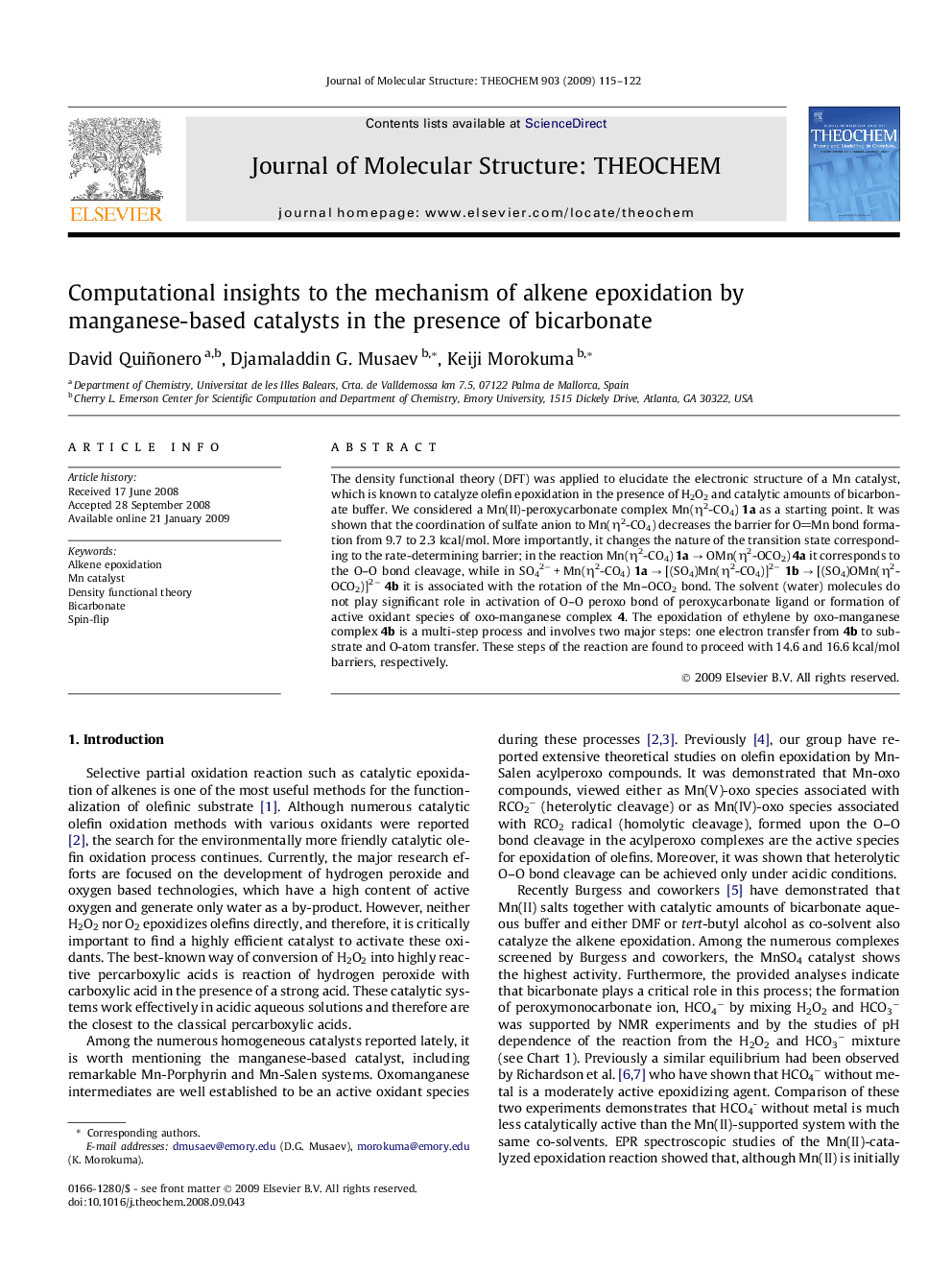| Article ID | Journal | Published Year | Pages | File Type |
|---|---|---|---|---|
| 5416767 | Journal of Molecular Structure: THEOCHEM | 2009 | 8 Pages |
Abstract
The density functional theory (DFT) was applied to elucidate the electronic structure of a Mn catalyst, which is known to catalyze olefin epoxidation in the presence of H2O2 and catalytic amounts of bicarbonate buffer. We considered a Mn(II)-peroxycarbonate complex Mn(η2-CO4) 1a as a starting point. It was shown that the coordination of sulfate anion to Mn(η2-CO4) decreases the barrier for OMn bond formation from 9.7 to 2.3 kcal/mol. More importantly, it changes the nature of the transition state corresponding to the rate-determining barrier; in the reaction Mn(η2-CO4) 1a â OMn(η2-OCO2) 4a it corresponds to the O-O bond cleavage, while in SO42â + Mn(η2-CO4) 1a â [(SO4)Mn(η2-CO4)]2â1b â [(SO4)OMn(η2-OCO2)]2â4b it is associated with the rotation of the Mn-OCO2 bond. The solvent (water) molecules do not play significant role in activation of O-O peroxo bond of peroxycarbonate ligand or formation of active oxidant species of oxo-manganese complex 4. The epoxidation of ethylene by oxo-manganese complex 4b is a multi-step process and involves two major steps: one electron transfer from 4b to substrate and O-atom transfer. These steps of the reaction are found to proceed with 14.6 and 16.6 kcal/mol barriers, respectively.
Related Topics
Physical Sciences and Engineering
Chemistry
Physical and Theoretical Chemistry
Authors
David Quiñonero, Djamaladdin G. Musaev, Keiji Morokuma,
